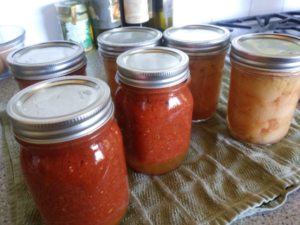Meal Making Transformation is a rich subject that opens a window to many interesting topics, as you’ll see in the webinar below.
Today’s post shares something new and different: a joint healthy eating webinar and roundtable discussion with me and three nutritionists. We had a lot of fun with this different podcast form. I hope you will enjoy our roundtable as much as we did. Be sure to get the free handouts each of us offered, too.
More Info
Mira Dessy Mira started with information about reading the nutrition information on packaged foods, especially the ingredient listing, “because there’s so much information there that can really help you make healthy choices at the grocery store.” As a longtime researcher on packaged foods, Mira shares some of the sneaky things going on with nutrition labels, like “funny math,” misleading serving sizes, “divide and conquer” sugar labeling, and what to watch out for with foods like meat and eggs that don’t have food labels.
Mary Collette I couldn’t agree more with Mira and am always hounding people to READ INGREDIENT LISTINGS! But, as explained in my talk, I have found that people seem to dislike–and even hate–reading ingredient listings.
I get it. Listings are hard to find and hard to read. Worse yet, they usually include unpronounceable stuff we shouldn’t be eating–but we go ahead and eat it anyway and then feel guilty!
It feels icky to get tricked into eating against our own best self-interest, but you have to wonder: If we of don’t like getting tricked, why do we keep eating foods that contain stuff that’s not good for us? My sense is that we feel there’s a lack of viable options.
Ever the optimist, I share how we can make the eating equation work to make real whole foods a viable option, and then we don’t have to rely on foods containing unpronounceable stuff.
Lauren Bryson Lauren shares 7 tangible tips that you can start implementing today to make affordable, sustainable, delicious meals at home, because life is expensive, especially given the inflation we’re experiencing.
Her practical tips include planning tools for budget-conscious meal making; making your own dips, spreads and dressings (with examples); being mindful of food waste; and all the benefits of eating seasonally in addition to money savings.

Kerry McClure Kerry explored the topic of mindful eating and what that really means. She explains why mindfulness is a key to becoming present and allowing the body to come into the parasympathetic mode, which is where the body rests and does a better job of digesting food.
Her seven practical tips show how to practice mindfulness at the table, beginning with her personal favorite, appreciating food. Engaging all the senses, watching plate size and slowing down are some of the many other strategies she offers to eat with the understanding that “mindfulness is a pause.”

